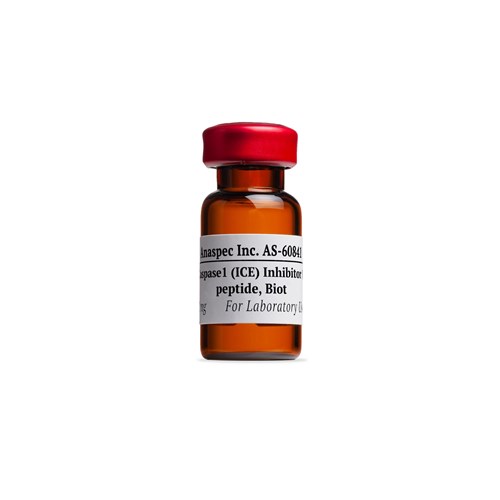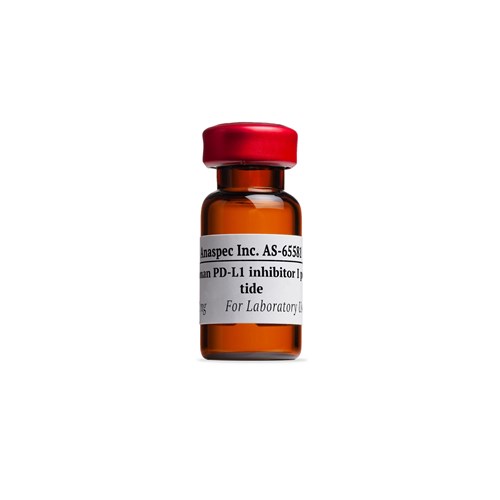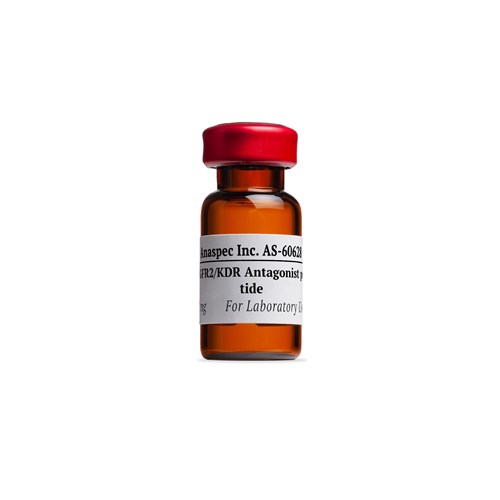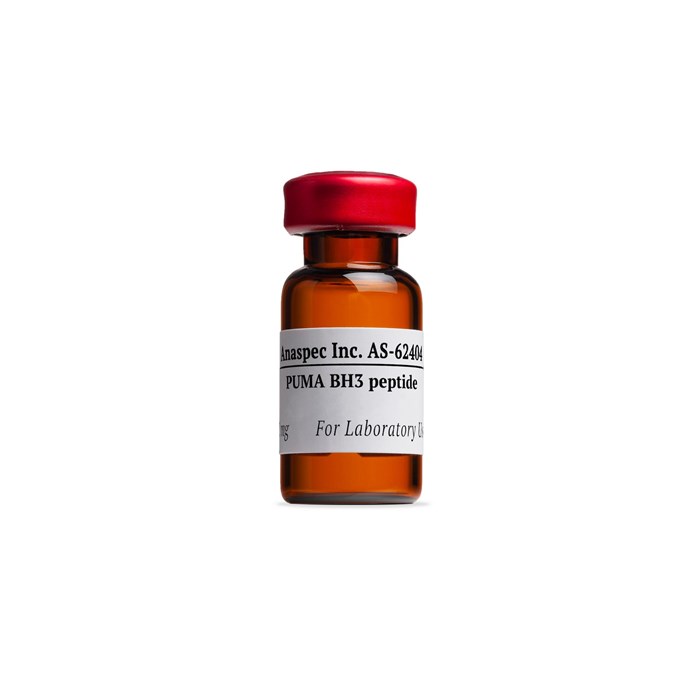PUMA BH3 - 1 mg
- Cat.Number : AS-62404
- Manufacturer Ref. :
-
Availability :
In stock
This is a PUMA (p53 upregulated modulator of apoptosis) BH3 domain peptide. PUMA together with Bcl-xL, and cytoplasmic p53 coordinates p53 functions. PUMA proteins bind Bcl-2, localize to the mitochondria, and induce cytochrome C release and apoptosis in response to p53. PUMA may be a direct mediator of p53-induced apoptosis.
Pyroglutamyl (pGlu) peptides may spontaneously form when either Glutamine (Q) or Glutamic acid (E) is located at the sequence N-terminus. The conversion of Q or E to pGlu is a natural occurrence and in general it is believed that the hydrophobic γ-lactam ring of pGlu may play a role in peptide stability against gastrointestinal proteases. Pyroglutamyl peptides are therefore considered a normal subset of such peptides and are included as part of the peptide purity during HPLC analysis.
Specifications
| Chemistry | |
| Sequence one letter code |
|
|---|---|
| Sequence three letter code |
|
| Molecular Formula |
|
| Molecular Mass/ Weight |
|
| Modification | |
| Conjugation |
|
| Quantity & Purity | |
| Purity |
|
| Storage & stability | |
| Form |
|
| Storage Conditions |
|
| Activity | |
| Biomarker Target | |
| Research Area | |
| Sub-category Research Area | |
| Usage |
|
| Source | |
| Source / Species |
|
| Codes | |
| Code Nacres |
|
You may also be interested in the following product(s)



Citations
Mechanism of apoptosis induction by inhibition of the anti-apoptotic BCL-2 proteins.
PNAS . 2008 Dec 23 ; 105(51) 20327 | DOI : 10.1073/pnas.0808036105
- J. Chipuk
- et al
